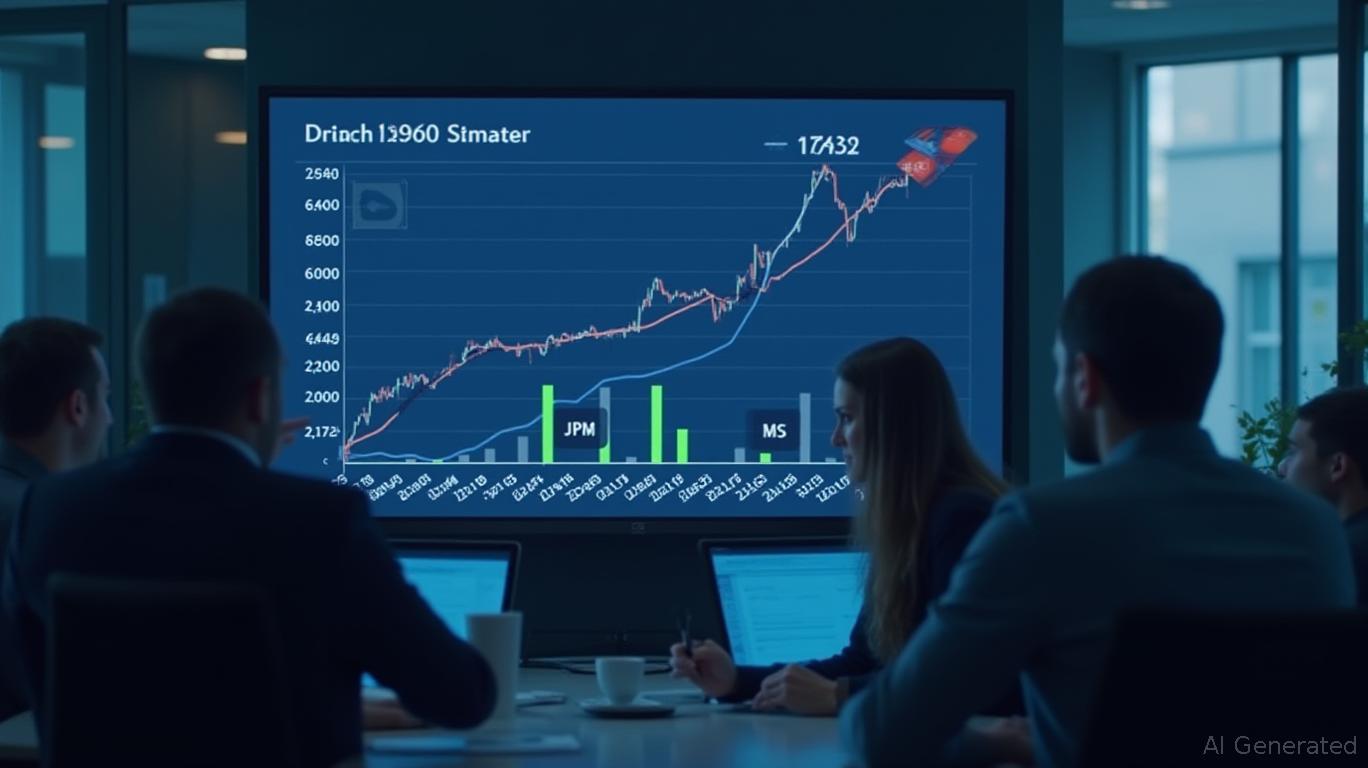Washington Trust Bancorp's Strategic Resilience in a Challenging Rate Environment
In the first quarter of 2025, Washington Trust Bancorp (WASH) demonstrated a blend of financial discipline and strategic foresight amid shifting macroeconomic conditions. The bank’s earnings call revealed a company navigating a complex landscape of interest rate uncertainty, competitive deposit markets, and evolving credit dynamics. While challenges persist, the results underscore a solid foundation for sustained growth.

Financial Performance: Navigating Mixed Signals
Washington Trust’s net income of $12.2 million ($0.63 per share) for Q1 2025 included two notable one-time items: a $7 million gain from branch sale-leasebacks and a $6.4 million pension settlement charge. Adjusted for these, net income came to $11.8 million ($0.61 per share), reflecting core operational performance. The star performer was net interest income (NII), which rose 11% sequentially to $36.4 million. This improvement stemmed from a 34-basis-point jump in the net interest margin (NIM) to 229 basis points—a direct benefit of the bank’s balance sheet restructuring in Q4 2024.
However, fee income faced headwinds. Wealth management revenue dipped 2% to $9.9 million, while mortgage banking income fell 19% to $2.3 million. Despite this, the mortgage pipeline surged 59% to $95 million, signaling optimism for future fee growth. On the expense side, non-interest costs rose 4% to $35.8 million (excluding the pension charge), driven by payroll taxes and salary-related costs. Management reaffirmed guidance for non-salary expenses at $13.5 million per quarter, suggesting cost discipline remains a priority.
Balance Sheet Strength: A Shift Toward Liquidity
The bank’s balance sheet improvements were among its strongest highlights. Total loans dipped 1% to $4.2 billion due to elevated payoffs and lower line utilization, but deposit growth offset this. Core in-market deposits jumped 4% to $513 million, a record high fueled by organic growth and a single large relationship. Notably, the bank slashed brokered deposits by $270 million and FHLB borrowings by $275 million, reducing reliance on costlier funding. This culminated in a loan-to-deposit ratio of 100.7%, down from 105.5%, easing liquidity pressures.
Capital ratios also strengthened. The CET1 ratio rose 56 basis points to 11.76%, while total risk-based capital improved to 13.13%, bolstered by reduced borrowings and higher deposits. Management’s focus on capital preservation is clear: the dividend payout ratio remains elevated at 90%, but the goal is to lower it to the “mid to low 80s” by year-end.
Credit Quality: Steady Hands on the Wheel
Washington Trust’s credit metrics remain robust. Non-performing loans (NPLs) totaled $17.5 million (0.42% of total loans), with an allowance for loan losses covering 190% of estimated losses. Management highlighted progress on key problem loans, including a $3.3 million office property loan nearing resolution and a $20.5 million lab facility loan showing improved occupancy and equity injections. While a $7.6 million commercial loan saw a charge-off due to updated appraisals, the proactive management of these exposures underscores disciplined risk practices.
Strategic Priorities: Positioning for Rate-Neutral Growth
The Q4 2024 balance sheet restructuring has positioned Washington Trust as “rate neutral,” lessening its reliance on further Federal Reserve rate cuts. Management now expects the NIM to hit 235 basis points in Q2 but cautions that future rate cuts will yield diminishing returns. To counter this, the bank is doubling down on deposit growth strategies, including hiring retail sales officers and promoting CDs/money market accounts.
Loan pipelines also point to optimism: commercial pipelines exceed $100 million, and residential pipelines are growing seasonally. Management remains cautious on loan growth, however, forecasting low single-digit annual expansion.
Outlook & Risks: Balancing Caution with Opportunity
While Washington Trust’s fundamentals are improving, risks linger. The high payout ratio (90%) could constrain capital flexibility unless earnings rise meaningfully. Competitiveness in deposit markets remains fierce, and the resolution of remaining problem loans—particularly the lab facility and office properties—will test credit quality resilience.
Conclusion: A Bank Built for Resilience
Washington Trust Bancorp’s Q1 2025 results paint a picture of a bank leveraging strategic discipline to navigate uncertainty. Key positives include:
- A 229 basis point NIM (projected to rise further), supported by a restructured balance sheet.
- Deposit growth that reduced reliance on costly funding, lowering the loan-to-deposit ratio to 100.7%.
- Strong credit metrics, with NPLs at 0.42% and an overfunded allowance.
- Capital ratios at decade-high levels (CET1 of 11.76%).
Despite a high payout ratio and competitive deposit pressures, the bank’s focus on organic loan growth, cost management, and liquidity improvements positions it to thrive in a rate-neutral environment. Investors should monitor the trajectory of the NIM, the resolution of problem loans, and progress toward reducing the dividend payout ratio. For now, Washington Trust’s resilience in a challenging quarter makes it a compelling play on regional banking stability.
Data as of Q1 2025 earnings call. All figures in USD unless stated.










